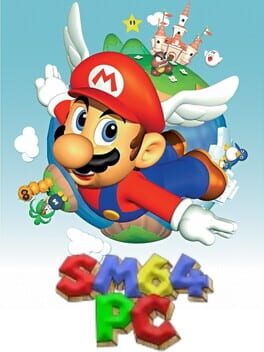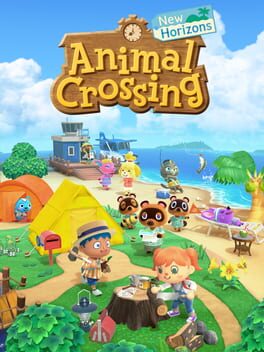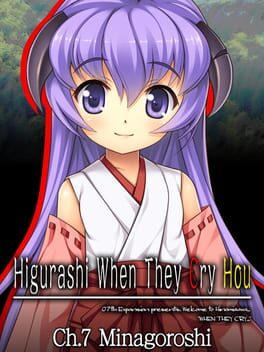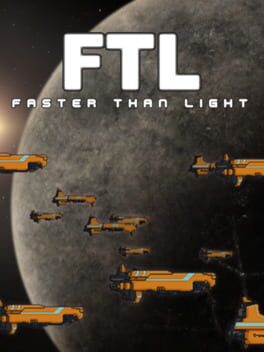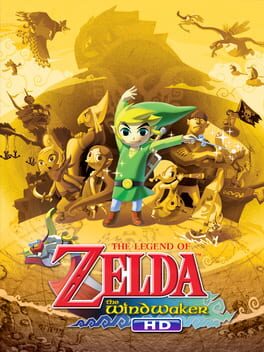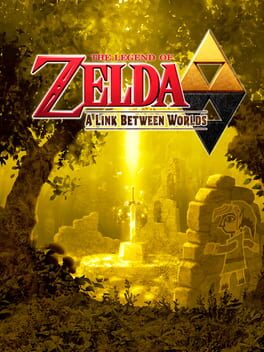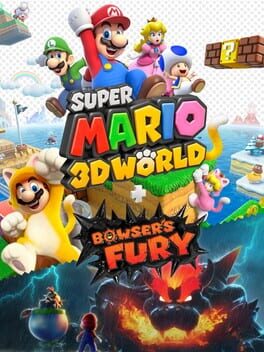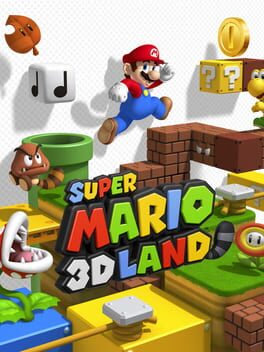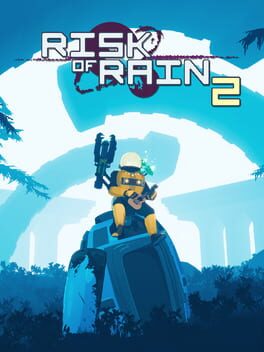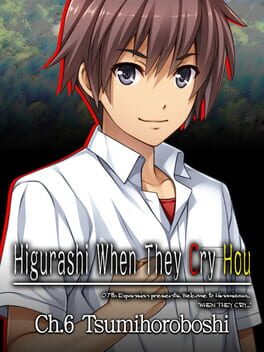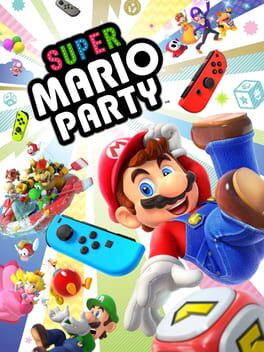Scale
This review contains spoilers
When I first watched the anime for Higurashi, I always felt the most mixed about this arc. While the ride is fun for its duration, it ends up feeling incredibly pointless when victory is snatched away at the very end. I have a different opinion now, and I think it actually contributes a lot to the message of the entire series. Nonetheless this arc is still significantly more flawed than the previous ones, especially compared to the prior two answer arcs which were nearly perfect.
One of the surface level issues with this arc is that it's unfortunately the 7th game out of 8. With the themes of this chapter being all about fighting against fate and not falling to pessimism, it's somewhat harmed when you know going in that it's doomed to failure. It's worth noting that I now feel this perspective is somewhat invalid, as the journey there is incredibly important and Rika's eventual failure is critical to showing how this chapter developed her and her perspective. Nonetheless, my first thoughts when I finished the anime version of this arc were "that was pointless," so I felt the need to note this down.
The more pressing issue with this arc is regarding it's main antagonist, the Child Welfare Office. This government agency is depicted as so comically incompetent that it's hard to take the arc seriously. The employees don't know anything about the case, and the social workers and administrators are made out to be incredibly stubborn for the sole purpose of establishing an antagonist to work against. The interactions with the office are incredibly slow and boring too, since it basically bogs you down in a slew of government bureaucracy alongside the main cast. Ryukishi even admits that his depiction of the office was poor in the Staff Room, and apologies for it. Government corruption and incompetence is an interesting topic to tackle, but this arc handles it poorly and is extremely one-note.
As for the positives, the entire first section of this arc is a 10/10. Being able to see Rika's perspective is awesome as a twist from the previous chapters, and Hanyuu just being dumped on you without much initial explanation is really funny. There's a ton of cute interactions early on, and it's lovely to see how Keiichi is able to break down Rika's negative mindset and encourage her to work towards changing her own fate for the rest of this chapter. The character interactions are genuinely at their all time peak for the series in the first half. When Teppei eventually shows up, it elicits genuine emotion and it's heartbreaking to see how Rika desperately struggles to save Satoko before eventually giving up. She even goes as far to request that the Yamainu and Takano assassinate her uncle (which is a different issue I'll discuss later).
Even after Teppei shows up, this arc stays positive. The scene with Keiichi and Shion's argument over how to deal with Teppei is amazing, and I love how Shion is made to directly parallel Ch.3 Keiichi, even repeating the 1500 seconds line again. It's another great aspect of his character development and a fantastic continuation of his role from the previous arc.
Overall though I think the flaws of this arc become the most noticeable once it shifts back to a Keiichi POV. Staying with Rika's POV could've allowed the Child Welfare Office segment to have a more unique perspective as well as give the new character of Hanyuu more time to shine. Although Keiichi is not a bad character by any means (quite the opposite really), it still takes away one little change that could've kept the arc more unique. As per usual though it's still fun to see him band together a crowd to fight for Satoko. The section where he convinces Mion's Grandmother is where the arc finally starts getting good again.
After Satoko is saved, the arc switches back to a primarily Rika POV, which is a breath of fresh air. Probably the main benefit of the sluggish government bureaucracy segment is that it almost makes you forget that Rika is still going to get killed soon. This makes the sudden snap back to reality after their success feel a lot more impactful, which I thought was really well executed. Everything from Rika's preparations up to the Takono reveal and her execution are really enthralling to read. I really love the Hinamizawa Syndrome lore dump too, though its questionable how Rika knows so much about it and yet never suspected Takano seriously. The scene where Takano walks up to each restrained club member and shoots them in the head is honestly kinda peak. Rika's execution scene is also beautifully done, and I love it for the same reasons I love Satoko's resolve in Ch.5. The Emergency Manual 34 segment at the end is also harrowing, though I think it was probably one of the most underwhelming endings compared to Ch.3, 5, or 6. I guess it's because the main cast is already dead at that point, so you're only hearing about unnamed villagers being killed.
Another issue that people take with this arc/Rika as a character is how she never once suspected Takano/the Yamainu as being her killers. This is honestly completely understandable, and has always been Higurashi's greatest structural flaw. This is especially the case with Hanyuu introduced, the sole supernatural element in the series who explicitly goes out and about with her sole ability being to observe people. However, in her defense, the Yamainu and Tokyo represent Rika's critical blind spot that she has no reason to ever suspect of killing her. As explained in the chapter, they're actually the people she suspects the least of killing her, since they know best that her death could cause a potential disaster. It's also stated that she has suspected Takano individually of being a potential culprit, although that topic isn't explored much more than as an offhanded remark.
Hanyuu is another good addition to this arc as well, and having Oyashiro-sama be a useless crybaby is a very funny twist (I love her). Her role as an unwitting antagonist is incredibly interesting, and partially explains why Rika was unable to solve her murder after 100 years. Her pessimism has been the primary reason for Rika being so reactive as opposed to active in the previous chapters, and the fact that Rika is the sole person she can talk to/be seen by can partially explain why Hanyuu never particularly helped to save her, instead keeping her stuck in the loops forever. I love how, by the ending, the goal shifts from breaking Rika's pessimistic attitude to instead breaking Hanyuu's, with Rika's perspective now fully changed. The implication that Hanyuu's existence is the cause of Hinamizawa syndrome is another interesting aspect of her character that is often left undiscussed. Overall I think she's really well executed here, but I'm more interested to see how she's handled in the following chapter.
The biggest issue with this chapter is definitely that it's the first one that requires a significant level of suspension of disbelief. Hanyuu (and, by proxy, Rika's looping) is the first outright supernatural occurrence in the story that cannot be explained by anything else. Additionally, the laughable incompetence and stubbornness by the Child Welfare Office is really hard to believe, making it harder to really get immersed in the story. An issue that arises at the end of the chapter regards the Yamainu, Takano, and the club itself. The Yamainu are meant to be an elite assassination unit, and yet they get their asses whooped by the unarmed club members and are only bailed out through their numbers and by Takano. This is an issue that only gets worse in Chapter 8, and it's really hard to take seriously and not just laugh at. It's arguable that it can just be seen as an extension of the club games though, but its still silly when they're beating actual soldiers in a hand to hand combat scenario and somehow not just getting immediately gunned down like Oishi was. The Emergency Manual 34 and Takano's motivations are also somewhat hard to believe, but I think that's a topic better discussed in Ch.8.
Overall though I still think this is a fairly solid chapter, but it's definitely shakier than 5 or 6. The beginning is fantastic, but the middle is a difficult-to-believe slog. The ending is once again really gripping to read though, and overall is the perfect setup for Chapter 8.
One of the surface level issues with this arc is that it's unfortunately the 7th game out of 8. With the themes of this chapter being all about fighting against fate and not falling to pessimism, it's somewhat harmed when you know going in that it's doomed to failure. It's worth noting that I now feel this perspective is somewhat invalid, as the journey there is incredibly important and Rika's eventual failure is critical to showing how this chapter developed her and her perspective. Nonetheless, my first thoughts when I finished the anime version of this arc were "that was pointless," so I felt the need to note this down.
The more pressing issue with this arc is regarding it's main antagonist, the Child Welfare Office. This government agency is depicted as so comically incompetent that it's hard to take the arc seriously. The employees don't know anything about the case, and the social workers and administrators are made out to be incredibly stubborn for the sole purpose of establishing an antagonist to work against. The interactions with the office are incredibly slow and boring too, since it basically bogs you down in a slew of government bureaucracy alongside the main cast. Ryukishi even admits that his depiction of the office was poor in the Staff Room, and apologies for it. Government corruption and incompetence is an interesting topic to tackle, but this arc handles it poorly and is extremely one-note.
As for the positives, the entire first section of this arc is a 10/10. Being able to see Rika's perspective is awesome as a twist from the previous chapters, and Hanyuu just being dumped on you without much initial explanation is really funny. There's a ton of cute interactions early on, and it's lovely to see how Keiichi is able to break down Rika's negative mindset and encourage her to work towards changing her own fate for the rest of this chapter. The character interactions are genuinely at their all time peak for the series in the first half. When Teppei eventually shows up, it elicits genuine emotion and it's heartbreaking to see how Rika desperately struggles to save Satoko before eventually giving up. She even goes as far to request that the Yamainu and Takano assassinate her uncle (which is a different issue I'll discuss later).
Even after Teppei shows up, this arc stays positive. The scene with Keiichi and Shion's argument over how to deal with Teppei is amazing, and I love how Shion is made to directly parallel Ch.3 Keiichi, even repeating the 1500 seconds line again. It's another great aspect of his character development and a fantastic continuation of his role from the previous arc.
Overall though I think the flaws of this arc become the most noticeable once it shifts back to a Keiichi POV. Staying with Rika's POV could've allowed the Child Welfare Office segment to have a more unique perspective as well as give the new character of Hanyuu more time to shine. Although Keiichi is not a bad character by any means (quite the opposite really), it still takes away one little change that could've kept the arc more unique. As per usual though it's still fun to see him band together a crowd to fight for Satoko. The section where he convinces Mion's Grandmother is where the arc finally starts getting good again.
After Satoko is saved, the arc switches back to a primarily Rika POV, which is a breath of fresh air. Probably the main benefit of the sluggish government bureaucracy segment is that it almost makes you forget that Rika is still going to get killed soon. This makes the sudden snap back to reality after their success feel a lot more impactful, which I thought was really well executed. Everything from Rika's preparations up to the Takono reveal and her execution are really enthralling to read. I really love the Hinamizawa Syndrome lore dump too, though its questionable how Rika knows so much about it and yet never suspected Takano seriously. The scene where Takano walks up to each restrained club member and shoots them in the head is honestly kinda peak. Rika's execution scene is also beautifully done, and I love it for the same reasons I love Satoko's resolve in Ch.5. The Emergency Manual 34 segment at the end is also harrowing, though I think it was probably one of the most underwhelming endings compared to Ch.3, 5, or 6. I guess it's because the main cast is already dead at that point, so you're only hearing about unnamed villagers being killed.
Another issue that people take with this arc/Rika as a character is how she never once suspected Takano/the Yamainu as being her killers. This is honestly completely understandable, and has always been Higurashi's greatest structural flaw. This is especially the case with Hanyuu introduced, the sole supernatural element in the series who explicitly goes out and about with her sole ability being to observe people. However, in her defense, the Yamainu and Tokyo represent Rika's critical blind spot that she has no reason to ever suspect of killing her. As explained in the chapter, they're actually the people she suspects the least of killing her, since they know best that her death could cause a potential disaster. It's also stated that she has suspected Takano individually of being a potential culprit, although that topic isn't explored much more than as an offhanded remark.
Hanyuu is another good addition to this arc as well, and having Oyashiro-sama be a useless crybaby is a very funny twist (I love her). Her role as an unwitting antagonist is incredibly interesting, and partially explains why Rika was unable to solve her murder after 100 years. Her pessimism has been the primary reason for Rika being so reactive as opposed to active in the previous chapters, and the fact that Rika is the sole person she can talk to/be seen by can partially explain why Hanyuu never particularly helped to save her, instead keeping her stuck in the loops forever. I love how, by the ending, the goal shifts from breaking Rika's pessimistic attitude to instead breaking Hanyuu's, with Rika's perspective now fully changed. The implication that Hanyuu's existence is the cause of Hinamizawa syndrome is another interesting aspect of her character that is often left undiscussed. Overall I think she's really well executed here, but I'm more interested to see how she's handled in the following chapter.
The biggest issue with this chapter is definitely that it's the first one that requires a significant level of suspension of disbelief. Hanyuu (and, by proxy, Rika's looping) is the first outright supernatural occurrence in the story that cannot be explained by anything else. Additionally, the laughable incompetence and stubbornness by the Child Welfare Office is really hard to believe, making it harder to really get immersed in the story. An issue that arises at the end of the chapter regards the Yamainu, Takano, and the club itself. The Yamainu are meant to be an elite assassination unit, and yet they get their asses whooped by the unarmed club members and are only bailed out through their numbers and by Takano. This is an issue that only gets worse in Chapter 8, and it's really hard to take seriously and not just laugh at. It's arguable that it can just be seen as an extension of the club games though, but its still silly when they're beating actual soldiers in a hand to hand combat scenario and somehow not just getting immediately gunned down like Oishi was. The Emergency Manual 34 and Takano's motivations are also somewhat hard to believe, but I think that's a topic better discussed in Ch.8.
Overall though I still think this is a fairly solid chapter, but it's definitely shakier than 5 or 6. The beginning is fantastic, but the middle is a difficult-to-believe slog. The ending is once again really gripping to read though, and overall is the perfect setup for Chapter 8.
This has got to be the best port on the switch. Being able to do the multiplayer online singlehandedly improves the game massively, and they also sped up the gameplay itself and added in the dive from odyssey. Overall way more satisfying to play than the original. Bowsers fury is a nice bonus to throw in.
2013
2011
2019
1990
This has to be the most overrated mario game of all time. It takes so many steps back from Mario 3 for no reason. The power up system is worse (1 hit no matter what level of power up you have), and the cape/yoshi's are some of the most overpowered items in the entire series. The cape is particularly egregious, as it kills almost every single enemy in the game when even the fire flower is incapable of doing that. It's almost like the entire game was designed for you to skip half the levels with cape/blue yoshi. I'm not a fan of the backup power up either
I appreciate that it is the first attempt for many series staples (secret exits, special world, etc) but most of them are poorly executed. The postgame after special world just looks ugly too which is a shame. The game also has really bad performance issues and slowdown, which is something that the earlier games didn't even really deal with. It's probably the worst performing mario game.
The main thing you can give mario world is that it probably has the most soul out of any of these early games, and there's a lot of charm to it. I still think it falters especially compared to its predecessor in 3, which had released 7 years prior. Probably the most disappointing one I've played since I liked it more as a kid.
I appreciate that it is the first attempt for many series staples (secret exits, special world, etc) but most of them are poorly executed. The postgame after special world just looks ugly too which is a shame. The game also has really bad performance issues and slowdown, which is something that the earlier games didn't even really deal with. It's probably the worst performing mario game.
The main thing you can give mario world is that it probably has the most soul out of any of these early games, and there's a lot of charm to it. I still think it falters especially compared to its predecessor in 3, which had released 7 years prior. Probably the most disappointing one I've played since I liked it more as a kid.
This review contains spoilers
This chapter is so goated. The only complaint I have about it is that it slows down a lot in the middle, right after the Watanagashi festival. Aside from that there's so many fantastic elements in Tsumihoroboshi.
Ch 6 has, imo, some of the all time best Higurashi scenes up to this point in the story. Both of the scenes at the dump with Keiichi and Rena were amazing. Keiichi remembering what he did in Chapter 1 is probably my favorite Higurashi scene now, and made me feel genuinely emotional with how well it's written and the new revelations that are revealed to the reader in it. The rooftop fight is also the perfect finale, although it may be considered a little lengthy for some (but I personally found it very fitting, and I love the parallel to their club games).
Ch.6 additionally has some of the best character interactions and relations as well. I love how the entire cast supports each other, and it makes Rena's downfall in the latter half of the chapter all the more tragic. My one complaint is that Satoko is mostly left out of it, but that's a common trend with the entire series unfortunately. The support triangle between Keiichi->Rena->Mion that is demonstrated throughout the entire series is just really touching, and it's at its peak in this chapter. I really can't properly put into words how much I loved everything about the character writing here.
Rena is such an interesting character too. All the previous chapters establish her as being exceptionally sharp, so you already know going in that she’ll be one of the most entertaining characters to read through. It’s sad to see the state she fell to prior to the story even happening, and the revelation that she nearly died from the disease before even moving to Hinamizawa makes everything she does even more impressive. She’s also the only character to have killed prior to even really falling victim to the virus (though granted, Rina was in self defense). It’s sad to see her need to reach that point, but it’s simultaneously made more interesting compared to the previous protagonist Shion. Compared to Shion’s arrogance, Rena is a lot more genuinely competent and brutally efficient with how she takes care of both the murders and the bodies. It’s cool as somewhat of a continuation of their rivalry from the previous chapter.
Rena’s great intuition makes it even more tragic to watch her spiral downwards after the Watanagashi festival. The community usually likes to poke fun at all the alien stuff that she ends up becoming obsessed with in this chapter. While it is funny, it's honestly tragic to read through in the narrative itself. It all just highlights how far she has to fall to get to that point, especially when compared to the previous victims of Keiichi and Shion. The parallels that are made between Rena and Keiichi all throughout the chapter are also just fantastic, culminating in the scene where Keiichi realizes that she is doing exactly what he did in the first Chapter. It’s all just so terrifically done.
Aside from that, this chapter does a lot of cool technical things as well. I wasn't sold on the dual Keiichi-Rena perspective at first, but it ends up being extremely well utilized, especially towards the end of the chapter. Rena's text becoming increasingly more red throughout it is silly but super cool. Additionally, in regards to the 07th mod, this chapter is probably the first time that the CGs are all pretty good, and the voice acting is probably at its peak (Rena’s VA is incredible). I’m a fan of how many red herrings were utilized in this chapter as well. The narrative gets extremely close to revealing the truth, but mixes in so much of Rena’s own delusions that it can easily lead the reader to writing off the actual solution. It also makes Rena an even more reputable character, as she gets extremely close to solving everything prior to becoming exceedingly more deluded (although granted, it was with a lot of help from Takano and she never pinpoints the correct culprit). It’s once again fun to compare her to Shion from the previous chapter, who gets similarly close to the solution in some aspects but never gets nearly as close as Rena. BTW this chapter has the 2nd Hanyuu mention in the series and it’s also the first time she has a voiced line. Kino.
My greatest regret is that my writing skills are too incompetent to properly do this chapter justice. It’s genuinely one of my favorite pieces of media that I’ve ever experienced.
Ch 6 has, imo, some of the all time best Higurashi scenes up to this point in the story. Both of the scenes at the dump with Keiichi and Rena were amazing. Keiichi remembering what he did in Chapter 1 is probably my favorite Higurashi scene now, and made me feel genuinely emotional with how well it's written and the new revelations that are revealed to the reader in it. The rooftop fight is also the perfect finale, although it may be considered a little lengthy for some (but I personally found it very fitting, and I love the parallel to their club games).
Ch.6 additionally has some of the best character interactions and relations as well. I love how the entire cast supports each other, and it makes Rena's downfall in the latter half of the chapter all the more tragic. My one complaint is that Satoko is mostly left out of it, but that's a common trend with the entire series unfortunately. The support triangle between Keiichi->Rena->Mion that is demonstrated throughout the entire series is just really touching, and it's at its peak in this chapter. I really can't properly put into words how much I loved everything about the character writing here.
Rena is such an interesting character too. All the previous chapters establish her as being exceptionally sharp, so you already know going in that she’ll be one of the most entertaining characters to read through. It’s sad to see the state she fell to prior to the story even happening, and the revelation that she nearly died from the disease before even moving to Hinamizawa makes everything she does even more impressive. She’s also the only character to have killed prior to even really falling victim to the virus (though granted, Rina was in self defense). It’s sad to see her need to reach that point, but it’s simultaneously made more interesting compared to the previous protagonist Shion. Compared to Shion’s arrogance, Rena is a lot more genuinely competent and brutally efficient with how she takes care of both the murders and the bodies. It’s cool as somewhat of a continuation of their rivalry from the previous chapter.
Rena’s great intuition makes it even more tragic to watch her spiral downwards after the Watanagashi festival. The community usually likes to poke fun at all the alien stuff that she ends up becoming obsessed with in this chapter. While it is funny, it's honestly tragic to read through in the narrative itself. It all just highlights how far she has to fall to get to that point, especially when compared to the previous victims of Keiichi and Shion. The parallels that are made between Rena and Keiichi all throughout the chapter are also just fantastic, culminating in the scene where Keiichi realizes that she is doing exactly what he did in the first Chapter. It’s all just so terrifically done.
Aside from that, this chapter does a lot of cool technical things as well. I wasn't sold on the dual Keiichi-Rena perspective at first, but it ends up being extremely well utilized, especially towards the end of the chapter. Rena's text becoming increasingly more red throughout it is silly but super cool. Additionally, in regards to the 07th mod, this chapter is probably the first time that the CGs are all pretty good, and the voice acting is probably at its peak (Rena’s VA is incredible). I’m a fan of how many red herrings were utilized in this chapter as well. The narrative gets extremely close to revealing the truth, but mixes in so much of Rena’s own delusions that it can easily lead the reader to writing off the actual solution. It also makes Rena an even more reputable character, as she gets extremely close to solving everything prior to becoming exceedingly more deluded (although granted, it was with a lot of help from Takano and she never pinpoints the correct culprit). It’s once again fun to compare her to Shion from the previous chapter, who gets similarly close to the solution in some aspects but never gets nearly as close as Rena. BTW this chapter has the 2nd Hanyuu mention in the series and it’s also the first time she has a voiced line. Kino.
My greatest regret is that my writing skills are too incompetent to properly do this chapter justice. It’s genuinely one of my favorite pieces of media that I’ve ever experienced.
I appreciate them having online vs, and generally it has some of the best minigames from each game. They made some weird balancing decisions though and the board choice is horrendous, why is the only decent one space land. They could've added more boards without much effort but they didn't for some reason. wasted potential.
2018
